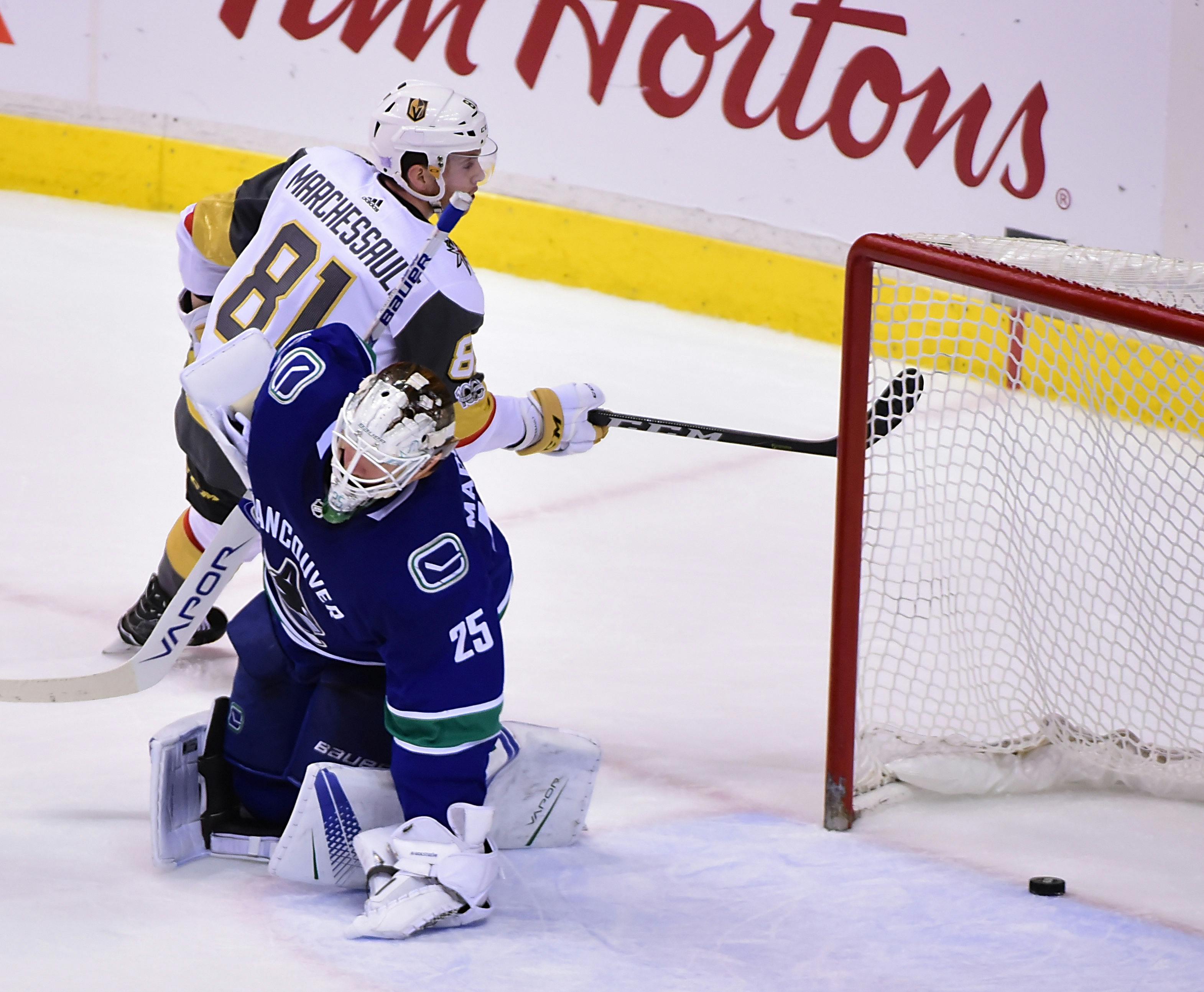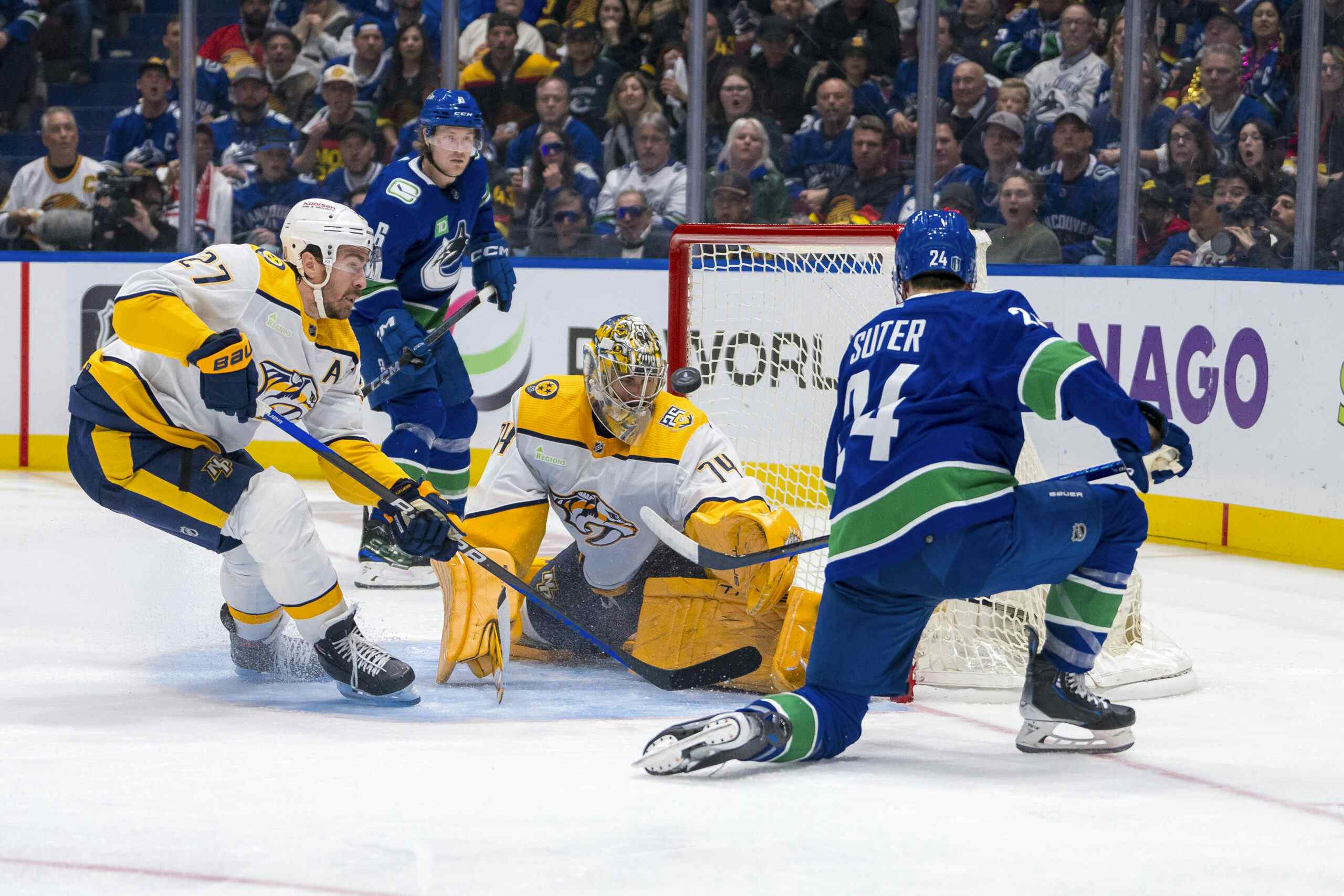What Can We Learn – Vegas Golden Knights

5 years ago
Yesterday, I kicked off a series looking at the four Conference Finalists and trying to identify reasons for their success. In case you missed it, you can read over the Tampa Bay Lightning one here.
Now, we look at the Vegas Golden Knights.
If you told me at any point in 2017 that the Golden Knights were going to be one of the four teams left in May, I wouldn’t have believed you. No one would’ve. That’s okay — it’s okay to be wrong about things and Vegas has been doing everything to prove people wrong.
Justin Bourne with The Athletic wrote a similar thing about Vegas before the Golden Knights made it this far and it was part of the inspiration for this series. Honestly, I didn’t expect Vegas to make it past San Jose before the second series started and this idea began to percolate. With that in mind, I will take some slightly different angles than Bourne did.
Note: Yes, this is CanucksArmy and thus there will be some projections onto the local team but the intention is not to criticize the Canucks.
Let’s dive into the Vegas Golden Knights.
Speed is King
Like the Lightning, the Golden Knights play the game at a fast pace that can be difficult to handle. They caught teams throughout the regular season and now in the postseason.
They made the Kings look especially slow and that carried over to the series against the Sharks. San Jose could keep up, but it seemed like the Knights were just constantly coming and able to take advantage of mistakes and sub-par goaltending from Sharks netminder Martin Jones.
It would’ve been really easy for the coaching staff to have them play a defensive or trapping style where they batten down the hatches and then hope for some luck. That would’ve been the easy road. Instead, it was about pushing the pace, getting the puck moving, reading and reacting to the play and then getting some good goaltending.
Sportsnet columnist and PDOcast host Dimitri Filipovic offers a nice observation here:
That idea won’t always work — and it could’ve easily burned them — but it created an exciting product for an expansion team that needed to generate some buzz. Honestly, it allowed some of the Knights players to be creative and do things that a defensive style likely wouldn’t have allowed.
It exposed slow teams and kept the NHL’s elite on their toes.
Teams make mistakes – take advantage of it
The Golden Knights were in a position that may only get repeated again in the sense that the expansion draft gave them an opportunity to take advantage of teams previous mistakes. That will likely occur again when Seattle joins the fray, but otherwise, it’s not something that can be replicated.
But, taking advantage of other teams bad contracts is something that can be done. We saw it with Arizona taking on Pavel Datsyuk and Dave Bolland, New Jersey (and Florida) taking on Marc Savard’s contract and Carolina taking on Bryan Bickell’s contract to acquire Teuvo Teravainen — these are some examples of ways to add assets. You have to have an owner who is willing to eat that money but if you have space the opportunity is there to leverage cap space into value. You can acquire more draft picks or other players to help in the now.
The Golden Knights seized this opportunity to acquire a plethora of picks and then some players that are part of their team right now like Jonathan Marchessault. They have been then able to peddle those picks to build up their prospect pool (which started at zero) or turn them into now-players like Tomas Tatar.
They also leveraged their cap space to acquire Ryan Reaves for the cost of a mid-round pick and cap space. They acquired Derrick Brassard, ate some salary, and then sent him to Pittsburgh (all in one day). You can quibble with the player that they acquired, but at the end, they gave up a 4th round pick and an AHL player to acquire a player that they felt would help their NHL lineup. It’s even better to look at when you consider that the Penguins gave up 20 spots in the 2017 NHL Entry Draft to acquire Reaves, allowing St Louis to move back into the first round.
Not every time will work out, but the thought process behind it is something to keep in mind when it comes to the opportunity cost that is lost when you max out your cap space when it’s not really needed.
That opportunity cost is a market inefficiency that more teams could take advantage of.
This should also serve as a lesson to avoid unrestricted free agency to the best of your abilities. Every team has bad contracts and the majority come from that frivolous spending done in the early days of July. Vegas was able to avoid this naturally and thus had cap space throughout the entire season. Those last two points should be an important takeaway.
The Pacific Division is not good

This may be the only fully Canucks angle in the whole series.
The Golden Knights benefitted from the Pacific Division not being that good. At the bottom, you had the Canucks, who are rebuilding. The Coyotes appear to be trending upwards and then followed by the two Alberta teams who had varying levels of disappointing seasons.
Anaheim and Los Angeles appear to be in the past with their style of play, roster makeup and prospect pools. That leaves us with San Jose, who just can’t get over that hump.
All of this is to say that the Pacific Division is anyone’s guess next year, and the Golden Knights could replicate their success. A lot of your playoff success can be dictated by your matchups and the Golden Knights have reasonably easily dispatched the two California teams they faced and the argument can easily be made that any other Pacific Divison team would’ve met the same fate.
The Canucks have a long way to go before there can even be the suggestion that they can secure a playoff spot within the Pacific, but crazier things have happened. Like an expansion team making the freaking Conference Finals.
Giving those depth players chances
This was a topic that was covered by Justin Bourne is his version of this exercise, so I will try to expand on that.
The basic premise of one of the bullet points was that the Golden Knights were built on bit parts that were given expanded roles and thus flourished from there. Applying to other teams, and Justin articulated it quite well, why not give you depth players a chance to succeed when they do get inserted into the lineup. If you have an offensive winger, put him on an offensive line in your top-six. If you have a puck-moving defenceman who has succeeded in every level on the powerplay, throw him out there with the man advantage.
Every point matters in an NHL season but there is the opportunity to put some of your younger and utility situations that can allow them to flourish and develop.
Even looking in the crease for the Golden Knights, their duo of Marc-Andre Fleury and Malcolm Subban had been passed in the depth charts of their previous organizations and weren’t expected to give the Knights above average goaltending. After both battled through injuries, they were given chances to work through their dips and provide everything the Knights needed to win the Pacific Division.
Conclusion
We likely won’t ever see anything like what has happened with Vegas again. There was no way to predict that they would carry this momentum all the way here. But we can find some lessons in what they did and figure out to apply it to other teams.
The market inefficiencies is a huge aspect of the success that Vegas saw this year. They put themselves in a position to build for the future but were able to pivot and use some of those futures to add a player at the deadline. It didn’t work out perfectly but it’s a representation of what opportunity that could be available.
The Golden Knights are a really hard team to pin down and figure out what exactly made them successful, simply because there were so many things that went their way internally and externally. Good coaching, players stepping up, good goaltending and momentum all played a part in their success on the ice. Off the ice – they did well in assembling a team that the rules allowed and then took advantage of teams in a bind or who were fixated on not losing specific players.
There are some lessons to be taken here though and it will be interesting to see if any of those trends pick up over the next few seasons or if Seattle is able to do the same things.
Tomorrow, we will look at the Washington Capitals.





